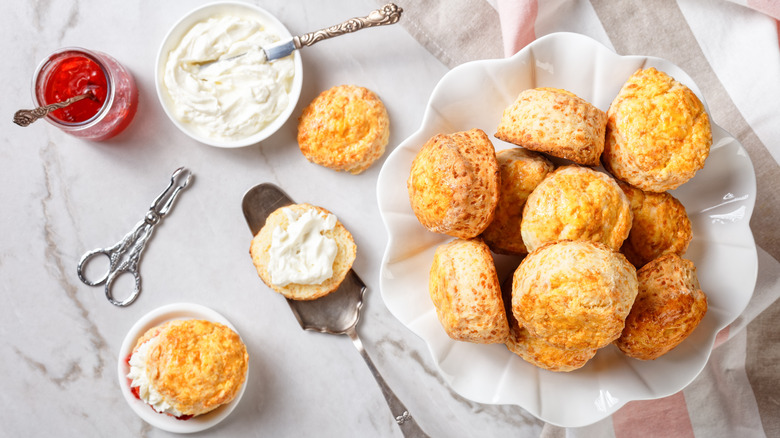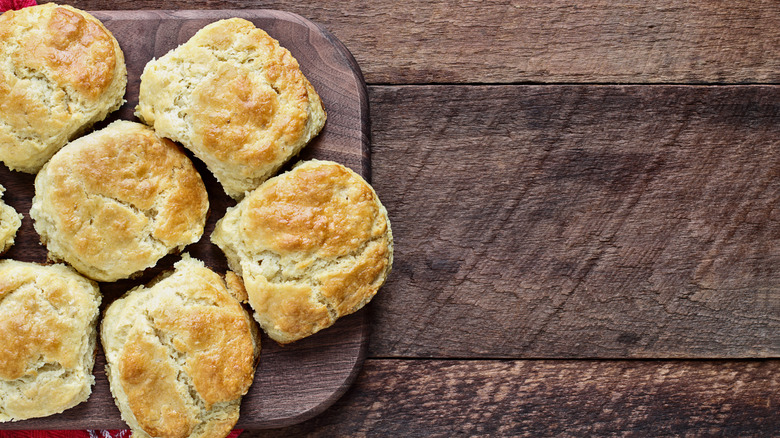Here's Why You Should Be Warming Your Cream For Drop Biscuits
It was probably Shakespeare who first posited that now-classic conundrum: Would you risk it for a biscuit? The Bard knew that biscuits were mischievous kitchen bedfellows; tricksters of the pastry world, whose moniker alone has been known to cause befuddlement. In the U.K. and Ireland, "biscuit" is the word one uses to refer to what Americans would call a "cookie," while the soft, dense, baseball-sized baked good that America calls a "biscuit" is recognized as a savory scone by most of the rest of the world (via BBC Good Food). Add to this cultural confusion the notion that the creamy bread bites can be made several different ways and it's no wonder Shakespeare pondered whether you should even bother risking the perilous pastries at all.
Drop biscuits — named for the way you "drop" a dollop of batter onto your baking sheet, resulting in beautifully lumpy, oddly shaped biscuits — can be sweet or savory, dressed up with condiments, or gobbled down plain alongside a bowl of hearty soup (via Cook's Illustrated). The ingredients are basic (flour, sugar, baking powder, baking soda, butter or cream, and salt), so why all the stress?
Well, the traditional method of baking biscuits involves a lot of patting and cutting, and they come with a list of dos and don'ts. As Cook's Illustrated puts it, it can be a "messy" process. Their recipe proposes a merry amendment to the age-old biscuit commandments — warming the cream before you add it to your dough — and the results are sonnet-worthy.
Warmed cream makes for an easier drop and less greasy biscuit
Cook's Illustrated points out that one ingredient in your biscuits, cream, is actually made up of two ingredients: water and fat. When those two things stay separated, as is wont to happen with cold cream, the result is tiny fat deposits in your biscuits that explode like Gushers in the oven during the baking process, resulting in a runny, greasy final product. But if you heat the cream before adding it to your batter, you'll melt the fat and liquefy the cream just enough to make your dough super moist, thereby easier to scoop and drop. They will also be less likely to spread while they bake, and you won't be taking greasy biscuits out of the oven.
A classic biscuit means cutting cold butter into your batter, rolling out the dough, and hand-cutting rows of biscuits before baking them. If that's too much ado about nothing, try a drop cream biscuit, which eliminates the extra steps of rolling and cutting (via Cook's Illustrated). And if you really want biscuits as you like it, Hamlet the cream warm up in the microwave first. This (taming of the) shrewd method will have you making drop biscuits for the twelfth night in a row, and that's a midsummer night's dream come true.

